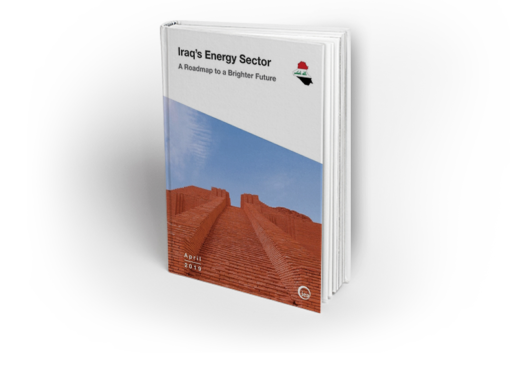
The economic and financial situation in Iraq remains ever challenging, but improving oil prices and the IMF’s Stand-By Arrangement could place the country in an upward trajectory.
Incessantly damaged by geopolitical tensions, the Iraqi economy is one that is has endured profound challenges it its journey to recovery. A faint light can however be seen at the end of this tunnel—in a twist of fate, Fitch Ratings in March instilled confidence in the war-torn economy as it revised its outlook on Iraq’s Long-Term Foreign-Currency Issuer Default Rating (IDR) from negative to stable and affirmed the IDR at ‘B-‘ (similar to that from S&P). Iraq’s country ceiling was affirmed at ‘B-‘ and its Short-Term Foreign-Currency IDR at ‘B’.
Economic growth
Iraq has been severely affected by the ISIS conflict and the plunge in global oil prices since 2014. The government responded to the fiscal and balance of payments crisis with a large but necessary fiscal adjustment supported by financial assistance from the international community.
According to the IMF, real GDP growth was sustained at 11 per cent in 2016, supported by a large increase in oil output that benefitted from past oil investments. Nevertheless, the non-oil economy experienced an eight per cent contraction due to the conflict and the fiscal consolidation.
In 2017, economic activity is expected to remain muted due to a 1.5 per cent contraction in oil production under the agreement reached by the OPEC, and only a tepid recovery of the non-oil sector.
The plunge in oil prices has driven the decline of Iraq’s gross international reserves from $53.7 billion at end 2015 to the still comfortable level of $46.5 billion at the end of December 2016. Fiscal pressures remain significant with the government deficit remaining at 12 per cent of GDP in 2016, due to continuing weak oil prices and rising humanitarian and security spending. Total public debt increased from 32 to 64 per cent of GDP during 2014-16. Credit growth decelerated and non-performing loans in state-owned and private banks increased significantly in 2016,” said Christian Josz, Mission Chief for Iraq in a recent statement.
In an economic analysis supplied by the Trade Bank of Iraq, the country is said to still suffer from major structural issues preventing economic expansion. The forecast for real GDP growth is to reach 2.3 per cent in 2017 and 4.4 per cent in 2018, compared to -3.5 per cent on average between 2014 and 2016. The return of three million displaced Iraqis to their homes after the liberation of Mosul is expected to improve economic activities in these areas driven by private consumption.
The efforts to liberate ISIS controlled areas over the past two years led to a widespread destruction of urban areas. Accordingly, the reconstruction of these liberated areas, supported by financial pledges from the international community, is projected to spur economic growth and booth investment levels in 2017 and beyond. Nevertheless, this economic growth is seen to drive up imports to satisfy the surge in demand for capital and consumer goods.
The Iraqi government secured a $5.34 billion loan from the IMF to support economic stability. Nevertheless, fiscal consolidation is the central precondition to the IMF disbursing the loan. Industry players therefore expect to see government spending decrease gradually over the coming quarters.
Budget deficits, fiscal and monetary policy
The expected increase in oil prices in 2017 and beyond is set to improve the country’s budget deficit. Fitch in its recent rating action estimated that the budget deficit narrowed to IQD 16.5 trillion or 8.1 per cent of GDP in 2016, from 12.3 per cent of GDP in 2015. The IMF programme agreed in July 2016 is believed to be providing a useful policy framework and has helped Iraq’s financing options. However, progress has been slow in a number of areas including surveying arrears, in part due to capacity constraints.
In 2017, Fitch forecasts that the deficit will narrow further, to 5.1 per cent of GDP, with higher average oil prices driving strong revenue growth (Fitch forecasts Brent crude to average at $52.5/b in 2017 and $55/b in 2018, up from $45.1/b in 2016; also assuming that Iraqi oil sells at a consistent discount to Brent). Fitch forecasts Iraqi oil exports (excluding exports from the Kurdish region) to average 3.3 million b/d in 2017-18. The rating agency incorporated non-oil revenue of IQD 8 trillion (the IMF assumes IQD 10.5trillion). On the spending side, it forecasts 12.1 per cent growth in expenditure after three years of substantial spending declines.
The financing of the budget deficit will be done through the sale of treasury bills, Central Bank of Iraq’s foreign reserves, international assistance of up to $12 billion as well as the sale a $1 billion Eurobond (with a 100 per cent US guarantee) issued in January (the country’s first, since 2006) and another planned for later in 2017 (without a guarantee). For 2018, Iraq still needs to identify sources of funding to plug the financing gap calculated by the IMF and will likely again focus on external financing.
Identified arrears totalled at IQD 12.5 trillion ($10.6 billion or 6.1 per cent of 2016 GDP) at end-June 2016. In October the IMF expected around IQD 6.5trillion of these arrears to be repaid in 2016 (including most external arrears) and these are included in 2016 spending estimates. The remaining identified domestic arrears are to be repaid in 2017-19 after they have been audited. According to Fitch, it remains uncertain what level of unidentified arrears that are not yet accounted for as there are still ministries that have not been surveyed. Since June 2016 Iraq is likely to have built up arrears at a much slower rate, given the higher oil price. In 2H16 the Iraqi oil price averaged $41/b compared with $25/b in 1Q16.
Government debt/GDP projections have improved because of smaller fiscal deficits, higher oil prices and the statistical office’s upward revisions to nominal GDP (by 2.8 per cent in 2014 and 13.6 per cent in 2015) which have been broadly accepted by the IMF. Fitch estimates the government debt/GDP ratio rose to 62.7 per cent in 2016, compared with a ‘B’ peer median of 54.9 per cent, and forecast it to average 61 per cent in 2017-18. The rating agency previously expected government debt/GDP at 75 per cent in 2018. This incorporates identified arrears. The potential for more arrears coming to light presents the risk of higher debt numbers.
Iraq’s total debt stock includes an estimated $41 billion (21 per cent of forecast 2017 nominal GDP) of debt lent to Iraq by GCC countries during the 1980-1988 Iran-Iraq war, which the authorities do not face pressure to repay or service. If this debt were restructured on the same terms as Paris Club debt was restructured, government debt/GDP would be 43 per cent in 2016, lower than the ‘B’ peer median. The vast majority of remaining external debt is owed to the Paris Club and multilateral and bilateral institutions.
Nevertheless Iraq’s fiscal position is estimated to gradually improve over the coming quarters, as government revenues are bolstered by rising oil prices and oil production.
The Iraqi dinar is expected to experience inflationary pressures due to a rise in aggregate demand and higher commodity prices. Noting that housing and food comprise of 60 per cent of the Iraqi consumer price index basket, the inflation is expected to rise from 2.2 per cent in 2016 to 3.8 per cent in 2017 and level at five per cent in 2019 onwards.
“The authorities have maintained the exchange rate peg which remains a key nominal anchor. Medium term growth prospects remain modest driven by projected flat oil production and investments in the face of the revenue constraint and modest pickup in non-oil growth supported by the expected improvement in security and implementation of structural reform. Further reforms to create fiscal space for inclusive growth, strengthen the business environment, reduce corruption and repair the banking sector are needed to support private sector-led growth and diversification of the economy once post-ISIS reconstruction is underway. Risks remain high, arising primarily from uncertainty in the oil price outlook, security and political uncertainties, and administrative weaknesses,” commented Josz in a statement on this matter, following the IMF’s mission to Iraq in March.
Banking
The banking sector in Iraq is mainly dominated by the Government-owned banks such as the Trade Bank of Iraq, Al Rafidain and Al Rasheed banks. There are currently 66 banks in the country, six of which are government owned banks and 60 private sector banks of which 20 are partially or totally owned by foreign banks, with 16 Shari’ah-compliant banks.
Accoding to the analysis from Trade Bank of Iraq, the private banks are small and relatively new in the banking sector where according to 2015 consolidated balance sheets of Iraqi Banks, the private banks share is 10 per cent of the assets, 21 per cent of the funded limits and 25 per cent of the non-funded limits. In spite of its rapid growth since 2015, lending of the banking sector amounted to 14.5 per cent of GDP compared to 55 per cent for the MENA region as a whole.
State-owned banks have the lion’s share of banking business in terms of assets and liabilities in the Iraqi banking industry. This is due to the perceived notion that the deposits in state owned banks are protected.
Private banks offer a range of products, including consumer loans. However, the range of services provided by many banks is still limited, and loans are mainly short term loans related to wholesale and retail trade. Due to their small size, private banks are not yet able to finance large projects, as syndication is not yet used.
In 2015, state-owned banks dominate the balance sheet size where it holds 89.9 per cent of the total consolidated balance sheets of the banks operating in Iraq. Total Assets of Iraqi Banks were IQD 222.8 trillion and the government banks’ share was IQD 200.5 trillion. The remaining 49 private banks’ share stand at IQD 22.3 trillion. During the same year, 26 banks were recorded to have reached the capital requirement of the central bank—IQD 250 billion—while 27 banks did not.
Fitch believes that the banking sector is under-developed and fundamentally weak. Private sector credit to GDP is one of the lowest of any Fitch-rated sovereign. The two large state-owned banks, Al-Rafidain and Al-Rasheed, which have high non-performing loans and exceptionally low capital adequacy, dominate the sector. The government has appointed auditors as required by the IMF, but it remains unclear how the banks will be restructured or what this might cost in terms of recapitalisation by the government.
Generally, the banking sector in Iraq offers plain vanilla banking products in retail banking. The sectors that were financed by the banking sector for the year 2015 are—social services: 38.9 per cent; building and construction: 22.86 per cent; retail and wholesale: 14.27 per cent; transport/storage/communication: 6.3 per cent; water/electricity: 2.2 per cent; insurance/finance: 3.6 per cent; and Mining: 0.11 per cent.
Rating
Fitch Ratings last month revised its outlook on Iraq’s Long-Term Foreign-Currency Issuer Default Rating (IDR) from negative to stable and affirmed the IDR at ‘B-‘. Iraq’s country ceiling was affirmed at ‘B-‘ and its Short-Term Foreign-Currency IDR at ‘B’. This rating is similar to S&P’s where it reaffirmed Iraq’s ‘B-‘ long-term and ‘B’ short-term foreign and local currency sovereign credit ratings on the Republic of Iraq, with a stable outlook, August 2016.
Fitch’s revision of its outlook on Iraq is based on the country’s improved fiscal position relative to 2015 and 1H16 due to higher than expected oil prices and reduced government spending. The main factors that could, individually or collectively, lead to negative rating action are: 1) failure to secure adequate fiscal financing in 2017-18; 2) a deterioration in the country’s security, particularly if insecurity hinders oil production and exports.
On the other hand, the factors that could, individually or collectively, lead to positive rating action are: 1) a period of oil prices in excess of Fitch’s current forecasts, particularly if combined with higher oil production and exports and leading to an improvement in Iraq’s public and external finances; 2) a sustainable improvement in the country’s security that allows for stronger non-oil economic development.
(*)Nabilah Annuar is the editor for Banker Middle East. She was previously an editor for Islamic Finance News (IFN). Nabilah holds a Bachelor of Laws from the International Islamic University Malaysia and an Islamic Finance Qualification certification from the Chartered Institute of Securities and Investment.
Source: CPI Financial, 02 May, 2017
http://www.cpifinancial.net/features/post/40871/iraq-hanging-on
Download PDF: Iraq- hanging on. By Nabilah Annuar








Comment here